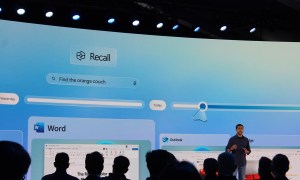The world of artificial intelligence has witnessed a significant transformation in recent years, thanks to the emergence of large language models (LLMs). These powerful tools have been trained on vast amounts of text data and can generate human-like text, answer complex questions, translate languages, and even write code. The open-source community has played a pivotal role in democratizing access to these advanced technologies, making them available to researchers, developers, and enthusiasts worldwide.
The Rise of Open-Source LLMs
The proliferation of open-source LLMs has been unprecedented. Models like the LLaMA series from Meta, QLoRA from Hugging Face, and MPT-7B from MosaicML Foundation have set a new benchmark for natural language understanding and generation capabilities. These models have been trained on diverse datasets, allowing them to capture nuances of human language and adapt to various contexts.
Key Features of Open-Source LLMs
- Accessibility: Open-source LLMs are freely available, making it easier for researchers and developers to experiment with and build upon existing models.
- Customizability: Users can fine-tune these models to suit specific needs, whether it’s for a particular industry or application.
- Collaboration: The open-source nature encourages collaboration among experts from various fields, leading to accelerated innovation.
MPT-7B: A Large-scale Language Model with Trillions of Parameters
MPT-7B is a groundbreaking model developed by MosaicML that boasts an impressive 1 trillion parameters. This behemoth of a model has been trained on a massive dataset, enabling it to learn intricate patterns in language and generate coherent text.
QLoRA: Quantized Language Model for Low-Resource ASR
QLoRA is an innovative approach to language modeling developed by Hugging Face. By using quantization techniques, QLoRA reduces the computational requirements of LLMs, making them more accessible to devices with limited resources.
LLaMA: The Large Language Model Archive
The LLaMA model series from Meta has revolutionized the field of natural language processing (NLP). With its ability to generate text that is indistinguishable from human-written content, LLaMA has set a new standard for AI-powered writing tools.
Awesome LLMS
Awesome LLMs is an extensive repository of open-source LLMs, providing a centralized hub for researchers and developers to explore and experiment with these powerful models.
LLM Leaderboard
The LLM leaderboard on the LMSYS website provides a comprehensive snapshot of the current state of the field. This ranking system uses Elo ratings to evaluate the performance of various models in different tasks.
RankModelElo RatingDescription
| Rank | Model | Elo Rating | Description |
|——|—————-|————-|——————————————–|
| 1 | gpt-4 | 1225 | ChatGPT-4 by OpenAI |
| 2 | claude-v11 | 1195 | Claude by Anthropic |
| 3 | claude-instant-v11 | 1153 | Claude Instant by Anthropic |
| 4 | gpt-3.5-turbo | 1143 | ChatGPT-3.5 by OpenAI |
| 5 | vicuna-13b | 1054 | a chat assistant fine-tuned from LLaMA on user-shared conversations by LMSYS |
| 6 | palm-21042 | 1042 | PaLM 2 for Chat (chat-bison@001) by Google |
| 7 | vicuna-7b | 1007 | a chat assistant fine-tuned from LLaMA on user-shared conversations by LMSYS |
| 8 | koala-13b | 980 | dialogue model for academic research by BAIR|
| 9 | mpt-7b-chat | 952 | a chatbot fine-tuned from MPT-7B by MosaicML|
The Future of Open-Source LLMs
As the field continues to evolve, we can expect even more innovative applications and breakthroughs in open-source LLMs. With their unparalleled potential for natural language understanding and generation capabilities, these models will undoubtedly shape the future of AI-powered communication.
In conclusion, the world of open-source LLMs is an exciting and rapidly evolving space that offers numerous opportunities for researchers, developers, and enthusiasts to push the boundaries of what’s possible with technology. As we continue to explore and harness the power of these models, let’s remember to keep our human hats on and appreciate the incredible complexity and beauty of human language.
References
QLoRA: Quantized Language Model for Low-Resource ASR
MPT-7B: A Large-scale Language Model with Trillions of Parameters
LLaMA: The Large Language Model Archive
VicunaNER: Zero/Few-shot Named Entity Recognition using Vicuna
Larger-Scale Transformers for Multilingual Masked Language Modeling
Awesome LLMs
LLM Leaderboard



